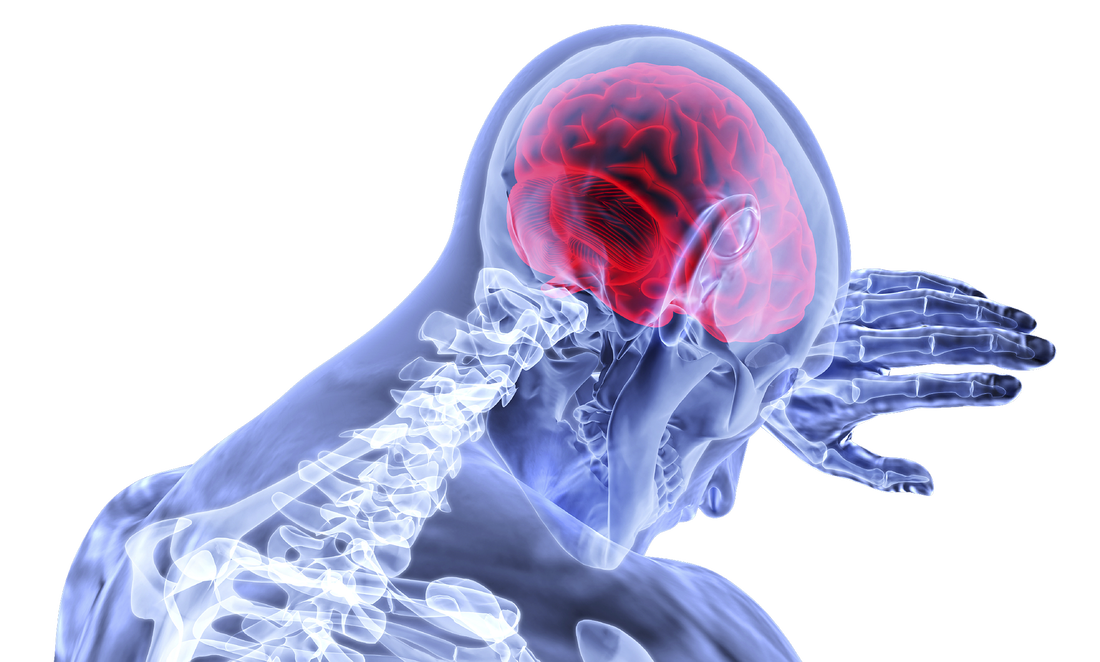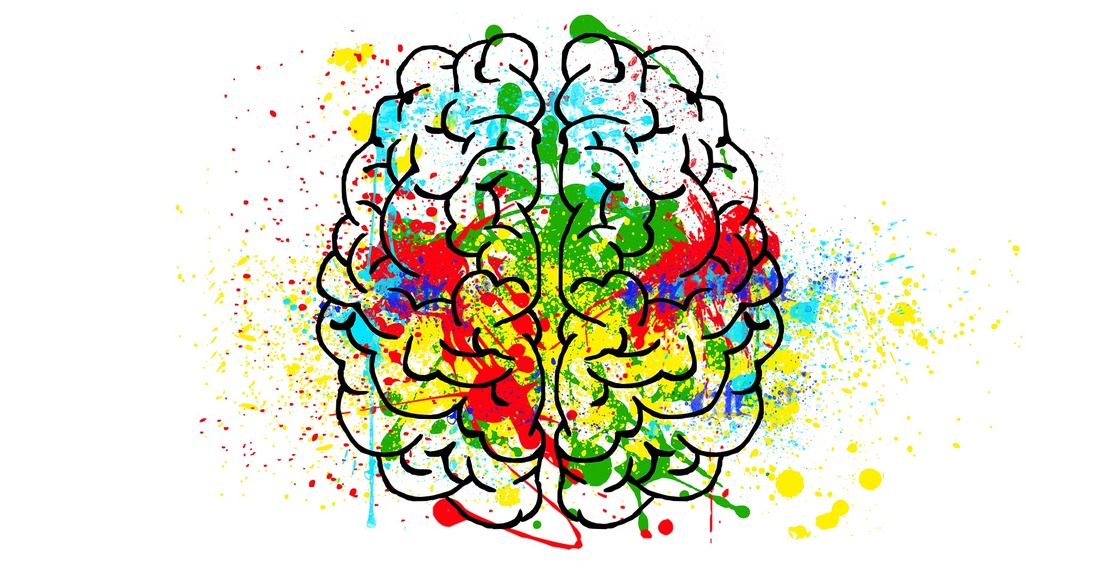|
Last week, I shared a bit about four interesting studies that look at pain. But I couldn’t stop at just four! So today, we’ll look at another four of the latest studies around how pain works, and what we can do about it. Mindful people experience less pain
Some people just don’t seem to experience pain as much as others. One study has suggested that part of the reason why is mindfulness. What is mindfulness? It’s being in the present moment, rather than the past or future. When you are mindful, you are an observer of your experience rather than reacting with emotions and judgements. 76 volunteers with varying levels of innate mindfulness took part. Their brains were scanned as they were exposed to painful heat of around 49 degrees Celcius (aka a typical Aussie summer day, right?) The scans reveal that people who were more mindful did not activate an area of the brain called the posterior cingulate cortex as much as those who were less mindful. Those who reported high pain levels had a greater activation of the cortex. The researchers concluded that mindful people are less caught up in the experience of pain. You can’t change your in-born level of mindfulness, but there is other research that suggests that mindfulness practices can help with pain. This might explain why! Being hungry shuts off perception of pain Pain is a valuable experience for the human body. Without it, we would damage our bodies without realising the consequences! But chronic pain can lead to lethargy and exhaustion. So what if nature gave us a way to suppress chronic pain temporarily? Turns out, nature might have done just that. Researchers have pinpointed a group of 300 brain cells that prioritise hunger over chronic pain. They found that hungry mice would respond to acute pain, but were less fussed about longer-term inflammatory pain compared to well-fed mice. Further experiments revealed that the neurotransmitter NPY can block the inflammatory pain response when needed. This is a new area for more research, but it could reveal ways to inhibit chronic pain without shutting off acute pain. 'Tuning' the brain can alleviate pain Previous research has found that alpha waves are associated with relief of pain from a placebo effect, and can influence how different parts of the brain process pain. So researchers looked into whether ‘tuning’ the brain to alpha waves can reduce pain. The experiment involved flashing light or playing noise that were in the alpha range. Both of these interventions significantly reduced intensity of pain. The researchers are now looking into how effective these are for different pain conditions. It’s early days. But soon, you could be watching YouTube videos or listening to meditations in the alpha range that are able to reduce your pain! Does an exploding brain network cause chronic pain? Hyperactive brain networks could be why people with fibromyalgia experience hypersensitivity. Their brain networks are primed to react with rapid and system-wide responses to minor in response to minor changes. This is known as explosive synchronisation. The researchers looked at the electrical activity of women with fibromyalgia. There was a strong correlation between the hypersensitivity of the brain and the intensity of pain reported by the women. This suggests that a chronic pain brain is electrically unstable and sensitive. So the next time someone asks you about your fibromyalgia, tell them it’s your exploding brain network! In case you haven’t figured out, supporting people with chronic pain is my passion. If you’re looking to work with a health professional who will work with you on your journey to recovery, book a myotherapy appointment today. It’s no secret that I’m a bit of a research geek. Scientists everywhere are exploring the experience of pain and how we can alleviate it. So I thought I’d share some of the most recent findings about pain. Some of these you might be able to apply in your daily life. Some you might like to share with your healthcare providers. And some are just interesting to know! Men and women remember pain differently
Scientists have theorised for years that chronic pain is related to memories of earlier pain. One team has found that men remembered a previous painful experience quite clearly. This made them hypersensitive when they were returned to the location of that experience. On the other hand, women were less stressed about their experience. The same researchers did the same experiment on mice, and ‘blocked’ the memories of male mice. When they ran the experiment with the blocked mice, they did not show signs of being stressed by the previous pain. The brain cells that make pain unpleasant If you step on a sharp object, your nerve cells in the brain tell you two things – there’s a piercing sensation in your foot, and that it’s not a nice feeling. But a team of scientists have discovered the brain cells that tell you all about that not-so-nice feeling – these brain cells are responsible for the negative emotions of pain. In an experiment with mice, they were able to identify a group of neurons in the basolateral area of the amygdala (often called the fear centre of the brain). When the mice experienced pain, these neurons would fire. But when this bundle of neurons was turned off, the mice didn’t experience the discomfort of pain. They were still able to feel and respond to sensations, but pain was no longer unpleasant for them. Pain as a self-fulfilling prophecy Have you ever flinched at something that you expect to hurt? The latest research suggests that you probably will feel pain, even if it doesn’t cause pain. Say what? If you expect pain, your brain will respond to that pain. Researchers scanned the brain of people who were exposed to low heat and high, painful heat. The participants were shown cues to suggest whether the heat was going to be low or high. When the heat was applied, they rated their pain. But what they didn’t realise was that the cues didn’t always correlate to the heat they received. When they expected high heat, brain regions around threat and fear were activated while they waited. When the heat was applied, there was more activity in the pain regions of the brain – even if it was a low heat. This may be part of why chronic pain lasts long after the damage to tissue has healed. Genes associated with chronic back pain discovered Chronic back pain is actually the number one cause of years lived with disability world-wide. So scientists are looking at all of the factors that might contribute to it. Recently, researchers have uncovered three gene variations that are associated with chronic back pain. The study looked at the genes of 158,000 people, including 29,000 that had chronic back pain. Then they looked for the genes that popped up for those with chronic back pain. One gene variant, SOX5, is involved with development of the body in the womb. If it’s turned off, it causes defects in cartilage and bone formation. A second gene that was already associated with disc herniation was linked to chronic back pain. The third was a gene that plays a role in the development of the spinal cord. This might not cure your chronic back pain, but it does help researchers to pinpoint the structures and processes involved. In the meantime, make sure you get yourself booked for a myotherapy session! There were so many interesting research papers that I have pt 2 coming up next week! If you don’t want to miss out, make sure you’re following my Facebook page. There, I share tips, info and insights into chronic pain management and myotherapy. Everyone has experienced pain at one time or another. But pain is personal – each of us experiences pain differently. Some of us feel it very intensely, and others not so much. This is because pain depends not only on what happens to your body, but also how your brain responds to it. This is what is known as the Pain Matrix. What is the Pain Matrix?
This matrix processes information from the nerves that tell us when we’re in danger or injured. It responds by increasing or decreasing our sensitivity to these messages. These changes – known as top-down regulation – control how intensely we feel pain. The Pain Matrix involves different areas of the brain that control emotions, behaviour, movement, perception and thoughts. So it’s no surprise that when you’re in pain, all of these different factors can change. How does the Pain Matrix work? There are two main changes that the Pain Matrix can induce. Anti-nociception is a reduction in sensitivity to pain, whereas pro-nociception is an increase. Anti-nociception uses the body’s natural painkillers – endorphins – to block the danger signal and decrease the pain response. Ever seen someone injure themselves in a dangerous situation, like in a car accident, but they can still move to safety without feeling pain? This is because a rush of endorphins temporarily blocks out the message of danger so they can get to safety. On the other hand, pro-nociception is usually due to swelling and chemical changes in the nerve endings around an injury. Have you ever had a bad paper-cut? Your sensitivity is much higher around the cut, even if you’re not touching the injured part. Sometimes, even moving the other fingers can hurt. Changes in the brain = changes in the pain Despite what we used to believe, the brain can continually change its form and function as a form of adaptation. These changes are known as Neuroplasticity. Nerve pathways can physical alter by increasing or reducing the number of connections. Or they can alter the release of neurotransmitters – more stimulating neurotransmitters means more nerve activity, which can increase the sensitivity of the system. When it comes to chronic pain conditions, the central nervous system is reorganised. This can include damage to nerves, leading to abnormal connections between them. Pain is more likely to occur than not, as pro-nociception increases and anti-nociception is impaired. This can lead to exaggerated responses to pain including pain caused by non-painful experiences - this is known as allodynia, and can be a common symptom in conditions like Fibromyalgia. Long term inflammation can lead to a heightened sensitivity of the nervous system. In the presence of inflammation the amount of nerve stimulation needed to send the signal decreases and the nerve firing rate increases. With so many danger messages coming in when there is inflammation present, the nervous system starts to respond on high alert by using its protective mechanism - pain! Controlling the pain There is no one size fits all approach to controlling pain, but theres increasing evidence that changes to pain intensity can be influenced by more than just the incoming messages from our tissue - it can also be influenced by our perceptions of danger and safety. This is likely due to the pain matrixes involvement in areas of the brain that deal with emotions, behaviours and thoughts. Pain experts Dr Lorimer Moseley and Dr David Butler of the NOI Group have published a fantastic book called Explain Pain that describes DIMs and SIMs - that is, Danger In Me (DIMs) and Safety In Me (SIMs). They say that any credible indication of danger can increase your perception of pain, and likewise a credible indication of safety can decrease the pain. We'll dive deeper into this research in future blogs. The Gate Control Theory involves a more physical approach to pain control. Have you ever bumped into something, then rubbed the area to make it hurt less? The Gate Control Theory is that non-painful sensations such as pressure can block or override the danger messages and reduce pain. The nerves that tell us about pressure are faster and more effective than those that tell us about danger. This might be part of why something like a good massage session helps with pain. Massage is also a great way to stimulate some feel-good endorphins, which promotes anti-nociception to reduce painful sensations! If you’re looking to minimise your pain, a combination of massage, exercise therapy and other myotherapy treatments can help. Have a look at my online booking calendar to book in for an appointment. If you’re coming to see a manual therapy practitioner, you’re probably experiencing some kind of pain. But pain as a whole is a misunderstood creature. So I thought I’d talk about pain, address that old "its all in your head" chestnut, and explain what it means for the person experiencing it. What is pain?
Pain is an incredibly complex thing, which is why researchers are still studying it. To put it simply, pain is a warning message. It is an output from the brain to the body, not the other way around. There is one crucial thing to keep in mind when I say that pain is an output of your brain. Just because pain is sent from the brain doesn’t mean that it’s ‘all in your head’. You are not crazy, you are not making it up. Pain is a neurological response, not a psychological response. The pain you experience is real – but the danger that the body perceives may not be, and this can be due to incorrect messaging from the neurological system. This pain message may be sent out because of incoming messages from the local tissue, saying there is damage. But this isn’t always the case. What pain is not (necessarily) Because pain is from the brain, rather than the tissue, pain doesn’t have to mean that there is damage. In fact, someone can experience pain in an area of the body that is structurally sound. This is because pain can be due to a problem with the function, or physiology, rather than structure, or anatomy. This is something that people who experience chronic pain need to keep in mind. Pain is not a reliable measurement of tissue damage. It is a sign that your nervous system is reacting to something. In chronic pain, pain is even more complex. This is because the nervous system can become overly sensitive to pain. So while one person might feel a touch on the hand as a gentle sensation, someone with chronic pain might feel it as a crushing, stinging or burning pain. What if there is tissue damage? Sometimes you will have a break or a strain. In this case, pain is telling you to minimise movement to avoid further damage. Your body wants you to rest the body part so that it can heal it as quickly as possible. But it’s also important to start back slowly once the pain has receded. Your body is still healing an injury once the pain is gone – a broken bone can take months or even years to fully heal. So make sure you follow your doctor’s (and myotherapist’s!) recommendations about getting back into activity after a significant injury. What this means for you At the end of the day, pain is a warning sign. But the message is that your body wants you to stop an activity that the brain thinks is dangerous. This is why I don’t agree with the philosophy of ‘no pain, no gain'. By taking a more gentle approach to treatment, we can release the aggravated muscles and normalise your joint movement without setting off the alarm bells for your nervous system. Is it time for you to relieve some of your pain? Book your appointment today, and we can support your body back to health. |
Meet Our Team
We have a team of great practitioners available 7 days a week at our Rowville clinic. Archives
July 2024
Categories
All
|
Got a question about Myotherapy?
Contact Mel by phone, email or Facebook
|
Simple Wellness Myotherapy & Remedial Massage Clinic
Shop 12B 150 Kelletts Rd Rowville VIC 3178 |
Phone us on
03 8204 0970 |





 RSS Feed
RSS Feed